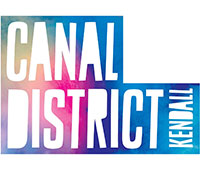Unless you’re lucky enough to live shoreside, you’ll need to transport your kayak to the water.
This page describes the various options available to transport your kayak on your car. Charles River Canoe & Kayak stocks all the transport options discussed here; just drop by our Paddling Store or e-mail us us with questions!
The Basics
When transporting your boat by car, the primary concern is the security of attachment to the vehicle. Each boat should be secured individually with two straps, plus lines for both the bow and stern. Avoid using one strap for multiple boats.
Bow & Stern Tie-Downs
Importantly, always tie down both the bow and stern to a secure point on the vehicle. We see an instance every year where a loaded rack fails and is blown off a car on the highway. Simple bow and stern lines prevent this catastrophe. It’s common sense anytime you car-top your boat!
Can’t find an attachment point under the vehicle for your bow or stern line? You may need to attach your towing hook to the bumper. Look on the face of your bumper for a small square (maybe 2″ by 2″) that can be removed with a screwdriver or key. Once this is popped off, you should see a threaded hole inside. In your trunk, find your spare tire jack and along with it a large eye-bolt that screws into the hole inside the bumper. Voilà — instant tie down point! If you need to add two tie-down points, you’ll likely need to purchase an additional eye bolt from your dealer. See your owner’s manual for details.
Foam Blocks
Foam-block systems are the most economical option for transporting your canoe or kayak. The foam blocks are first attached securely to your boat, then the boat is strapped to the vehicle. Finally, the boat’s bow and stern are tied down to the vehicle’s bumpers. While most of the necessary straps are included in the commercially available foam block kits, we recommend one additional 15′ strap to create a more secure tie-down.
Foam-block systems are popular because they are inexpensive and easy to use. However, for those people that are travelling frequently, over longer distances, or over rough terrain, we recommend a roof-mounted system that more securely holds your boat.
Roof-Mounted Racks
Roof-mounted systems are more secure than foam-block systems and can carry other types of outdoor gear in addition to kayaks and canoes. These rack systems can be mounted onto almost any car, truck, or van.
The primary components of roof-mounted racks are the horizontal bars and a system to attach the bars to the vehicle. Once the rack is mounted on your vehicle, you can select from a variety of specialized rack accessories used to attach your kayak or canoe to the rack. In addition to kayaks and canoes, accessories are available to carry gear like bicycles, skis, and surfboards.
Canoes can be strapped directly to the rack. For added security, we recommend the Canoe Carrier accessory (shown at right) that prevents the canoe from shifting side-to-side during transport. The Canoe Carrier includes a bow and stern tie-down kit and all necessary straps.
The main accessory options to attach kayaks to a rack are saddles, J-cradles, or stackers. These accessories usually come with all straps and hardware needed to securely tie down your kayak.
Saddles (shown at right) are made to carry the boat right-side up or upside down. Some saddle systems use rollers or a slippery fabric on the rear bar so that the boat can be loaded from the back of the vehicle by a lone person.
J-cradles (shown at right) and stackers hold the boat on its side, which tends to be a stronger part of the boat and therefore results in less deformation of polyethylene kayaks. A single stacker can be used to transport two or more boats — a potentially large cost savings — but for longer kayaks they aren’t quite as secure. Therefore, Thule recommends that no boat over 14’ long be used in conjunction with their stacker.
Thule has recently released the Hullavator (sequence shown at right), an accessory that features a gas strut to assist the loading and unloading of your kayak from the vehicle’s roof. The Hullavator reduces the height needed to lift a kayak by more than three feet and will allow more paddlers the freedom to enjoy their sport.
Additional paddlesports accessories that can be attached to a roof-mounted system include paddle holders, lock cylinders to prevent theft, and a variety of loading-assist devices.
Thinking Beyond the Roof — Trailers
In recent years, canoe and kayak trailers (see photo at lower right) have become increasingly popular, and for good reasons. First and foremost, you don’t need to lift the boat over your head — your rack is now at waist height. Second, you won’t worry about damaging your vehicle or constantly having a rack on your roof. Third, because of improved aerodynamics, your gas mileage will improve.
We currently stock a variety of canoe and kayak trailers, and would love to speak with you about them. Learn more about canoe and kayak trailers!
Come Talk To Us!
Once you’ve considered the options, come talk to us. If you have any questions, we’re here to help — drop by our Paddling Store or e-mail us!





